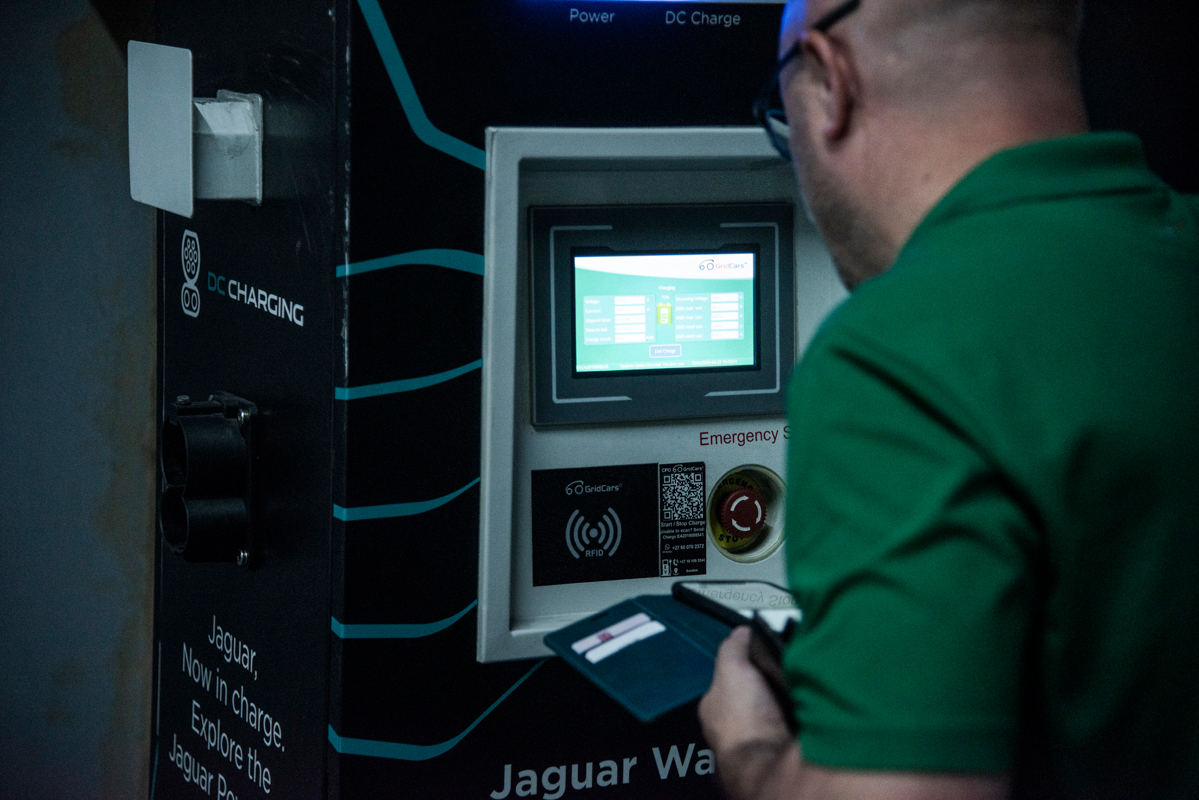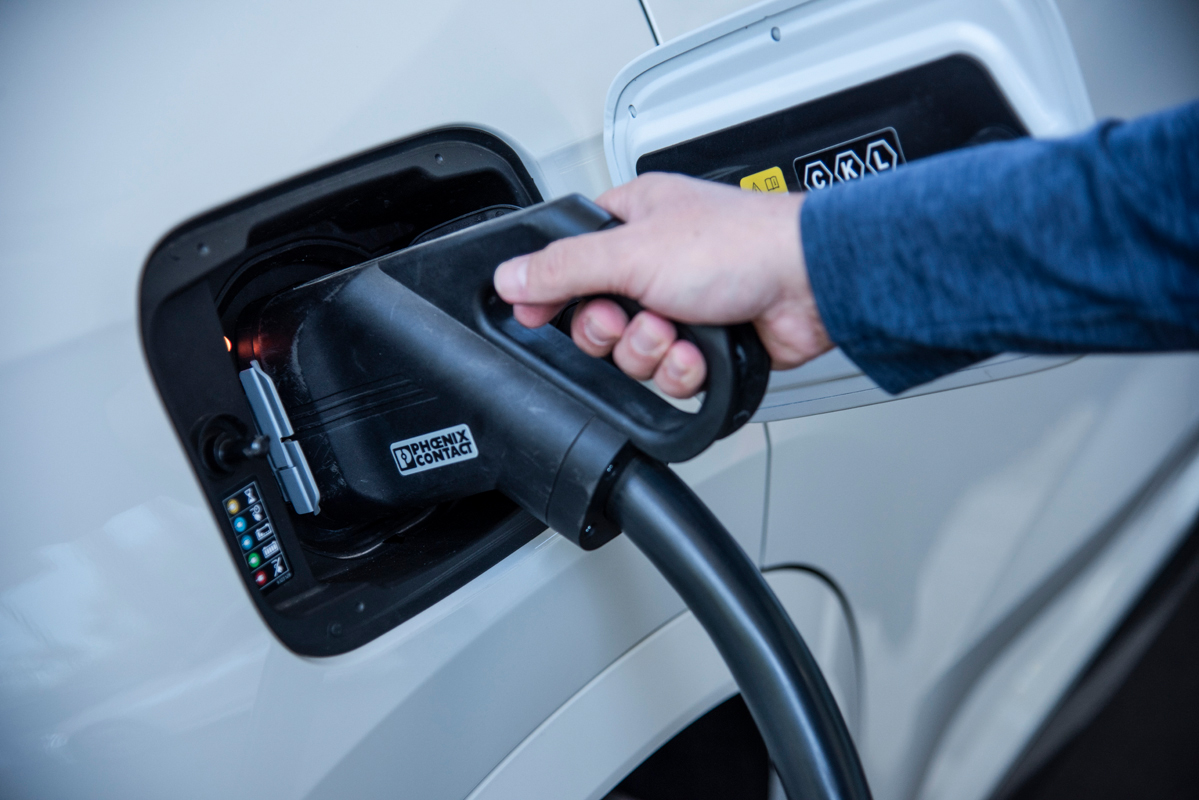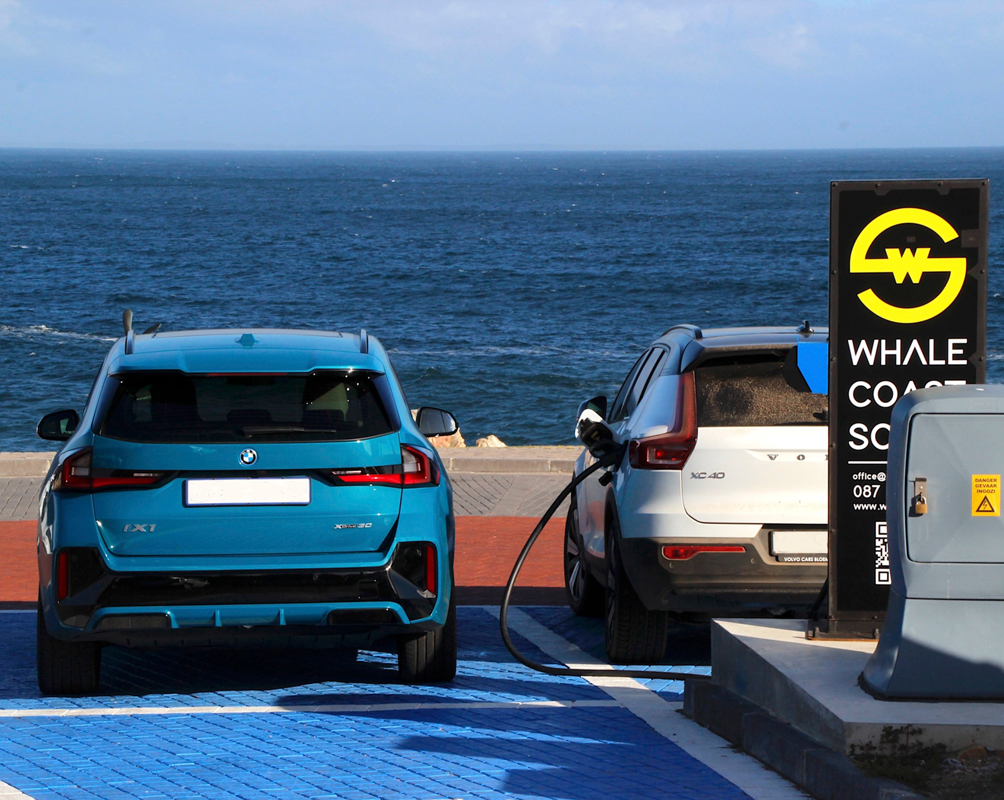
Working with Eskom and installing smart vehicle chargers are key to the successful roll-out of electric vehicles, says GridCars MD Winstone Jordaan.
With electric vehicles (EVs) becoming more affordable and more widely adopted, the question of how best to power these cars, vans, and trucks becomes increasingly significant.
Most EV owners, whether private individuals or businesses do most of their charging at home or at the company’s premises. The electricity that the owner feeds into the vehicle’s battery is substantially supplied by Eskom, South Africa’s power utility. Quite often, Eskom’s supply is augmented by electricity from the vehicle owner’s photovoltaic panels, popularly named “solar panels.”
However, some EV owners also rely on charging at public chargers that operate on the GridCars network, using electricity generated by Eskom. Where beneficial, this is supplemented by local renewables, such as solar panels and/or batteries at a shopping mall connected to the charge point.

An alternative option being touted is building “off-grid” solar charging facilities not connected to Eskom’s network. Although noble in intent, there are several reasons why this is not the ideal solution:
It is too expensive
Charging EVs from South Africa’s national grid is more cost-effective than building off-grid solar charging facilities, which requires substantial start-up costs. GridCars MD Winstone Jordaan says Eskom’s extensive grid infrastructure, despite some challenges, already exists.
“Leveraging Eskom’s grid for EV charging avoids the tremendous initial costs and ongoing maintenance expenses associated with setting up independent solar charging stations.

“If a site can substantially benefit from solar, adding it can be prudent when simply considering the EV charger as an additional load (something that requires electricity) at the site. However, building a solar array for a charger is not practical when only a small number of trucks or cars stop to charge,” Jordaan explains.
“This approach maximises the use of existing resources, for example using it to power multiple charge points, allowing multiple vehicles to charge simultaneously,” he adds.
It will struggle to satisfy the demand
The national grid provides a scalable solution for the growing number of EVs on South Africa’s roads. Off-grid solar facilities, while beneficial in specific contexts, may struggle to meet the demands of a large EV population due to space and energy storage constraints at the site.
In contrast, charging from the grid offers greater convenience to EV owners, with widespread access points, especially as GridCars and other grid-connected suppliers invest in the growing charging infrastructure. Where necessary, charge point operators will expand the appropriate resilience and capacity through solar and battery systems that are grid-tied. This will make it possible to both leverage the wider infrastructure and provide local benefits when solar is not used by the chargers.

It rejects clean energy available through Eskom
While solar energy is a clean source, it is most practical when paired with storage solutions or effective grid connections. “Energy for charging should ideally follow a hybrid approach and the national grid should be considered the primary supply. Then, options such as wheeling become effective tools to provide appropriate energy mixes, helping electricity consumers to access ‘green’ electricity,” Jordaan points out.
It is important to note that Eskom is gradually incorporating more renewable energy sources into its mix, which will further reduce the environmental footprint of grid-charged EVs over time, Jordaan adds.
Why smart chargers are a big deal
With the slow but steady increase in EV sales, it is essential to manage the additional load on the electricity grid effectively. This is where smart chargers come into play. These chargers communicate with the grid and they can adjust their charging rate based on the overall demand and supply of electricity.

Here are the reasons why installing smart chargers is crucial:
They help with load balancing and grid stability
Smart chargers help balance the load on the grid by managing when and how much electricity is used for charging EVs. By spreading the charging times and reducing peak load periods, smart chargers prevent grid overloads. This ensures a stable and reliable electricity supply for everyone, including solar and battery systems.
They are energy efficient and put more money in your pocket
Once Eskom introduces variable electricity pricing, these smart chargers can take advantage of charging EVs during off-peak hours when electricity is cheaper and demand is lower.
This not only reduces the cost of charging for EV owners but also optimises the efficiency of the electricity grid on local and national levels, using electricity more responsibly. This in turn will mean equipment is under less stress and will therefore last longer.

They support renewable energy integration
Smart chargers can be programmed to charge vehicles when there is a surplus of renewable energy on the grid, such as during sunny or windy periods. This supports the smart integration of renewable energy sources maximises the use of renewables and reduces reliance on fossil fuel energy sources.
“It will serve dealers in passenger cars and commercial vehicles well to supply EV customers with smart chargers, instead of chargers that cannot transmit or receive information. This will help EV owners to be part of the smart eco-system,” says Jordaan.
Eskom and GridCars are leading the charge
Since its inception in 2009, GridCars has only installed smart, connected chargers. GridCars was recently selected as the charge point partner for Eskom, to install pilot smart DC and AC chargers at various Eskom sites. “This demonstrates Eskom’s commitment to sustainable and efficient EV charging solutions,” Jordaan says.
The installations serve a dual purpose: They provide charge points for Eskom’s own EV fleet and facilitate research into optimising grid management and EV charging practices.

The gathered data will be invaluable in developing strategies to accommodate the increasing demand for EVs while maintaining grid stability.
This research will inform future policies and infrastructure developments, ensuring that South Africa uses best practices and superior charging technology.
Moving forward
Charging EVs from South Africa’s national grid, especially with smart chargers and renewable energy integration, offers a more sustainable, cost-effective, and efficient solution than off-grid solar facilities.
With GridCars and Eskom developing smart charging infrastructure, South Africa is well-positioned for a greener future, benefiting the grid, EV owners, and the country.
“We are excited about industry collaborations that address key challenges and ensure the grid’s sustainability and resilience,” says Jordaan. “Affordable, reliable EV charging networks require collaboration with sites, investment partners, and energy solution suppliers. With Eskom playing a pivotal role, we must build integrated systems, ensuring all participants play to their strengths,” he concluded.





